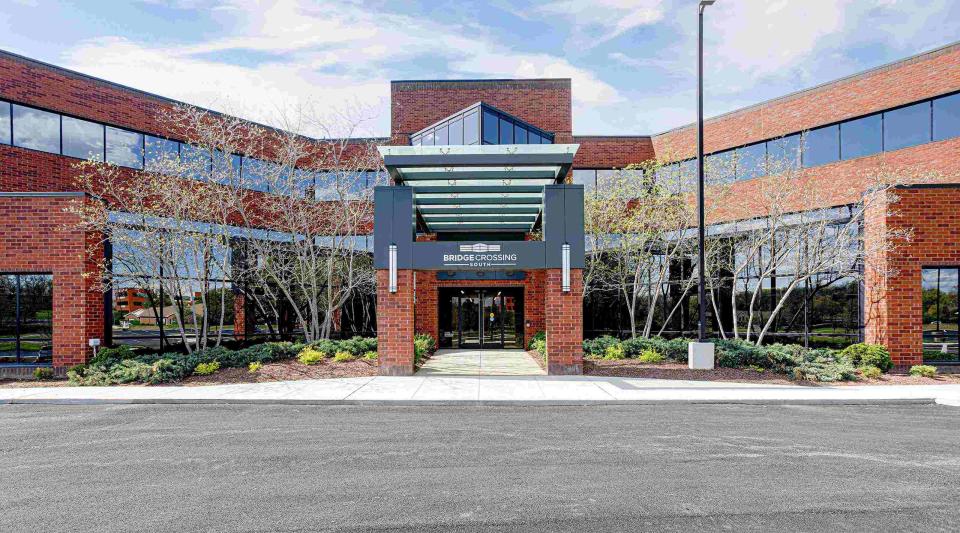Analysts praise Keppel Pacific Oak US REIT for stability in FY2022, headwinds priced in

“Operational numbers remained strong despite very challenging office market conditions.”
Analysts think headwinds are priced in for Keppel Pacific Oak US REIT (KORE), and while the outlook has moderated, it remains positive.
KORE’s results for FY2022 ended December were “slightly below forecast” at 96% of expectations, notes RHB Group Research analyst Vijay Natarajan. That said, valuations surprised on the upside, he adds.
“Operational numbers remained strong despite very challenging office market conditions — we attribute this to assets in right markets and a strong leasing team,” writes Natarajan in a Feb 2 note.
Natarajan maintains his “buy” call on KORE with a lower target price of 69 US cents (91 cents) from 74 US cents previously.
KORE is a pure-play US office REIT listed in Singapore. Its portfolio consists of 13 freehold office assets located in Austin, Atlanta, Denver, Houston, Sacramento, Seattle, and Orlando with an aggregate net lettable area of around 4.7 million sq ft.
On Feb 1, KORE reported a 8.5% lower distribution per unit (DPU) y-o-y at 5.80 US cents for the FY2022 ended December.
The REIT’s DPU for 2HFY2022 was 2.78 US cents, 12.6% lower than the year prior.
The lower DPU was due to the REIT manager opting to receive 100% of its base fee for 1QFY2022 in the form of units and 100% of its base fee in cash from 2QFY2022 onwards.
Net property income (NPI) for the full-year period increased slightly by 1.9% y-o-y to US$84.3 million. Adjusted NPI, which excludes non-cash straight-line rent, lease incentives and amortisation of leasing commissions, increased by 2.3% y-o-y to US$85.5 million.
To RHB’s Natarajan, gearing remains “comfortable” at below 40%. Year-to-date, KORE’s share price has bounced back some 19%, but remains cheap at 30% below book and offers 10% yield.
KORE’s overall portfolio value surprised on the upside, says Natarajan, coming in relatively flat, up 0.2% y-o-y, on an absolute basis, but declined 2.7% when including capex and tenant improvements.
In comparison, its peer Manulife US REIT earlier announced a 11% valuation decline. “This again differentiates a relatively positive outlook on KORE’s submarket and its limited tenant concentration risks,” writes the RHB analyst.
Despite uncertainty and negative news flows from the tech sector, KORE’s overall portfolio occupancy remained flat q-o-q at 92.6%. Physical occupancy, meanwhile, remained at approximately 60% on average.
For FY2023, while some fluctuations in occupancy are anticipated from known tenant exits, KORE’s management remains in active discussion with various prospects and is confident of maintaining its high occupancy levels with demand staying relatively firm for smaller leases, says Natarajan. “The impact from big tech layoffs and cutbacks is not expected to be significant in its Seattle and Sacramento submarkets and overall portfolio as such. Physical occupancy in its assets have instead seen an improvement from market cool-off and is currently at c.60%, which it sees as positive.”
In addition, KORE boasts a “strong” balance sheet with 77% of its debt hedged and no debt maturing until 4Q2024. Every 50 basis points (bps) rate increase should have a 1.2% DPU impact.
Building resilience through tough times
Meanwhile, DBS Group Research analysts Rachel Tan and Derek Tan maintain their “buy” call on KORE with an unchanged target price of 65 US cents.
“KORE’s assets in the tech hubs of Seattle, Austin and Denver contribute more than 60% of its NPI. Despite a potential slowdown in the tech sector, these submarkets remain office growth markets in the US,” they write in a Feb 2 note.
DBS notes that leasing momentum slowed in 4QFY2022, with KORE completing only 102,000 sq ft compared to the 9M2022 average of 182,000 sq ft per quarter.
Management expects leasing momentum could remain muted in 1HFY2023 in view of the uncertain macroeconomic outlook but may see some recovery in 2HFY2023 as interest rates stabilise, write the DBS analysts. “Nevertheless, management are in deep discussions on some significant leases and are hopeful to close them in the near-term.”
While the US office market remains volatile, macroeconomic sentiment has stabilised as the US Fed tapers rate hikes, notes DBS. “We believe that sentiment could turn when the macroeconomic outlook stabilises. KORE is currently trading at 0.7x price-to-book (P/B), offering FY2023 yield of 10%, an attractive level to monitor as we await a potential turn in the US office market.”
As at 4.26pm, units in KORE are trading flat at 57.5 cents.
See Also:
Click here to stay updated with the Latest Business & Investment News in Singapore
DBS cuts Nanofilm's target price to $1.33 on lowered profit guidance
Analysts maintain 'hold' on Parkway Life REIT following resilient 2HFY2022 results
Get in-depth insights from our expert contributors, and dive into financial and economic trends

 Yahoo Finance
Yahoo Finance 